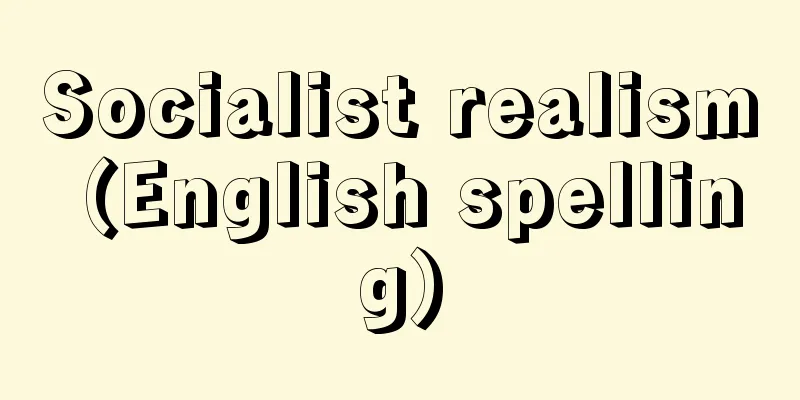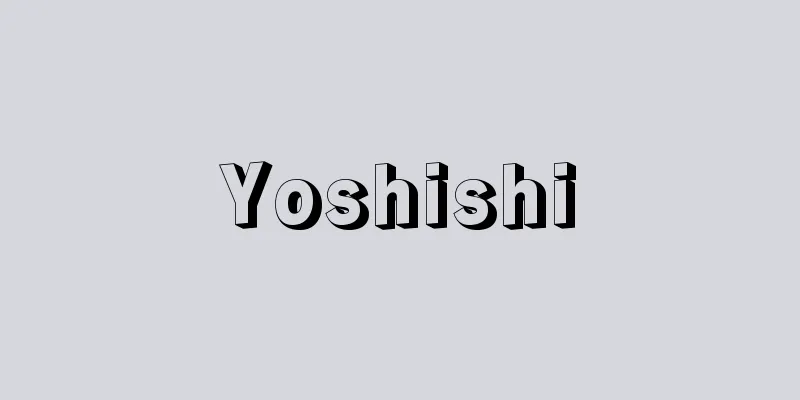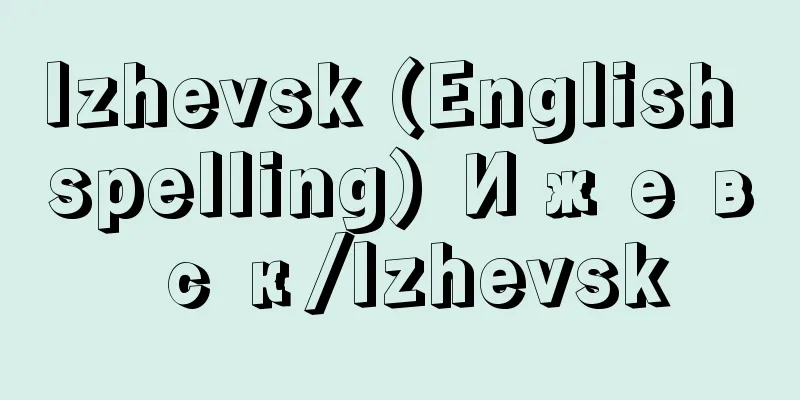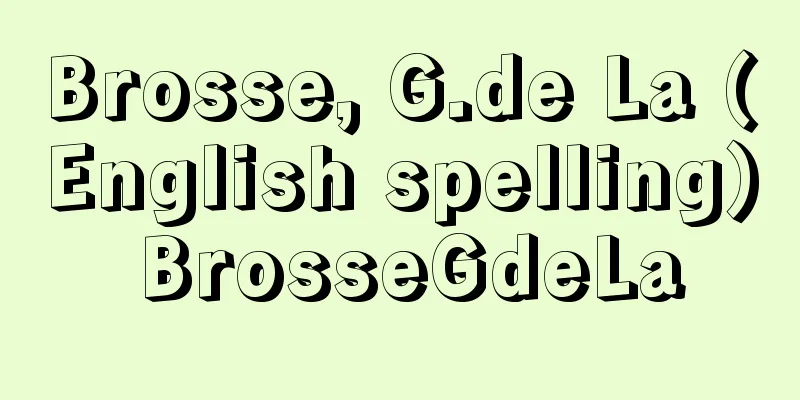Socialist realism (English spelling)

|
It is a method of artistic creation. It was proposed in the former Soviet Union in 1932, and in 1934, the Soviet Writers Union Statute defined it as "the basic method of Soviet art, literature and literary criticism." Its contents are summarized in two points: to portray reality in its revolutionary development in a historical and concrete manner, and to link artistic creation to the task of ideologically transforming and educating the working people toward socialism. To achieve this, writers must delve deeply into the lives and traditions of the people, depict the victory of the new over the old, and create new heroes who will realize this victory. It has also been argued that this realism can embrace revolutionary romanticism, from the standpoint of seeing the historical inevitability of the future society in the present society. Gorky's novel "Mother" (1907) is said to have first paved the way for this method, and Fadeev's "Destruction" (1927) and Ostrovsky's "How the Steel Was Tempered" (1932-34) are also considered to be works that take this standpoint. [Kurihara Yukio] literatureSocialist realism was welcomed by many writers of the time as a theory that defended the independence of artistic creation, since it was linked to criticism of the traditional dialectical materialist creative method, which required writers to have a highly communist worldview and political ideology, and the sectarian Rap (Russian Association of Proletarian Writers). At the time, it also had a major impact on progressive literary movements in countries other than the Soviet Union, encouraging the activities of such writers as Barbusse and Aragon in France, Seghers in Germany, and Fučik in Czechoslovakia. In particular, as the political movement at the time shifted to popular front tactics, the slogan of socialist realism played a role in rallying many writers together in the movement to defend anti-fascist culture, regardless of their political positions, and the term "proletarian literature" rapidly disappeared thereafter. However, apart from this political role, Socialist Realism was not necessarily systematized theoretically; in reality it was notable for an extreme rejection of avant-garde art and a return to classical realism, and furthermore unconditional support for and obedience to the Soviet regime under the leadership of Stalin was considered the primary qualification for a writer to be a socialist. The theory of socialist realism was introduced to Japan around 1933 and had a decisive impact on the proletarian literary movement, which was on the verge of collapse due to oppression. It was an opportunity to replace the conventional theory of "the superiority of politics" with the theory of "portraying reality as it is" and the unnecessary worldview. After the Japan Proletarian Writers League was dissolved in 1934, the so-called "socialist realism debate" was held by Moriyama Kei, Kubo Sakae and others, and they discussed the direction of the reconstruction of the art movement, the possibility of applying the slogan of socialist realism to Japan, and the relationship between worldview and creative methods. After World War II, socialist realism became increasingly colored by the personality cult of Stalin, but after the criticism of Stalin that began at the 20th Congress of the Communist Party of the Soviet Union (1956), it rapidly lost its influence. [Kurihara Yukio] artIn the art world at the time, conservative painters and critics took this theory to a low level, and only overvalued portraits of party leaders and realist works on the theme of revolutionary history painted by Brodsky, Gerasimov, Efanov, and Yuriy Ivanovich Pimenov (1903-77). As a result, modernist art spanning the early 20th century and avant-garde art that emerged around 1910 and swept through the 1920s were criticized and attacked, and Soviet and Russian art entered a long period of barrenness. [Hiroshi Kimura] [References] | | | | |Source: Shogakukan Encyclopedia Nipponica About Encyclopedia Nipponica Information | Legend |
|
芸術創作方法の一つ。1932年から旧ソ連で提唱され、34年、当時のソビエト作家同盟規約で、「ソビエトの芸術文学ならびに文学批評の基本的方法」と規定された。その内容は、現実をその革命的発展において正しく歴史的、具体的に描き出すこと、勤労人民を社会主義に向かって思想的に改造し、教育するという課題に芸術創造を結び付けること、の2点に要約される。その実現のために作家は、国民の生活と伝統に深く分け入り、そのなかの古いものに対する新しいものの勝利を描き、その勝利を実現する新しいヒーローの創造が要求される。また、このリアリズムは、現在の社会に未来社会に至る歴史的必然性をみるという立場から、革命的ロマンチシズムを包含しうると主張された。この方法への道を初めて開いたのはゴーリキーの小説『母』(1907)とされ、ファデーエフの『壊滅』(1927)、オストロフスキーの『鋼鉄はいかに鍛えられたか』(1932~34)もこの立場にたつ作品とされた。 [栗原幸夫] 文学社会主義リアリズムの提唱は、作家に高度の共産主義的世界観や政治的イデオロギーを要求する従来の唯物弁証法的創作方法や、セクト主義的なラップ(ロシア・プロレタリア作家協会)に対する批判と結び付いていたために、芸術創造の自立性を擁護する理論として、同時代の多くの作家に歓迎された。当時はソ連以外の国の進歩的な文学運動にも大きな影響を与え、フランスのバルビュス、アラゴン、ドイツのゼーガース、チェコスロバキアのフチークらの活躍を促した。とくに当時政治運動が人民戦線戦術に転換してゆくなかで、社会主義リアリズムのスローガンは政治的立場の違いを超えて多くの作家を反ファシズム文化擁護の運動に結集する役割を果たし、プロレタリア文学という呼び名は、これ以後急速に姿を消していった。しかし、このような政治的な役割を別にすれば、社会主義リアリズムはかならずしも理論的に体系化されず、現実には前衛芸術に対する極端な否定と古典的なリアリズムへの復帰が顕著にみられ、さらにスターリン指導下のソビエト政権への無条件的支持・服従が作家の第一義的な資格とされた。 社会主義リアリズムの理論は、日本にも1933年(昭和8)ごろから紹介され始め、弾圧によって崩壊に瀕(ひん)していたプロレタリア文学運動に決定的な影響を与えた。それは従来の「政治の優位性」の理論のかわりに、「現実をありのままに描く」という世界観無用論を台頭させる契機になった。日本プロレタリア作家同盟が34年に解散したあと、森山啓(もりやまけい)、久保栄(くぼさかえ)らによって、いわゆる「社会主義リアリズム論争」が行われ、芸術運動再建の方向性、日本に社会主義リアリズムのスローガンを適用することの可否、さらには世界観と創作方法との関係をめぐって議論された。第二次世界大戦後、社会主義リアリズムはますますスターリン個人崇拝の色彩を強くしたが、ソ連共産党第20回大会(1956)に始まるスターリン批判以後、急速にその影響力を失っていった。 [栗原幸夫] 美術当時の美術界ではこの理論を保守派の画家・批評家たちが低次元で受け止め、ブロツキー、ゲラシモフ、エファーノフ、ピメノフЮрий Иванович Пименов/Yuriy Ivanovich Pimenov(1903―77)らが描いた党指導者の肖像、革命史をテーマにしたリアリズム作品だけを過大評価した。このため20世紀初頭にまたがるモダニズム美術や、1910年前後に誕生し、1920年代を席巻(せっけん)したアバンギャルド美術は批判攻撃され、ソビエトおよびロシア美術は長い不毛の時期を迎えた。 [木村 浩] [参照項目] | | | | |出典 小学館 日本大百科全書(ニッポニカ)日本大百科全書(ニッポニカ)について 情報 | 凡例 |
<<: Social History Debate (English: Shè huì shǐ lùn zhàn)
>>: Socialist Law - Shakaishugiho
Recommend
The American Commonwealth
A comprehensive view of America by British politic...
Pulse amplitude modulation
…Part of APK is also called QAM (quadrature ampli...
Aquaviva, C. - Aquaviva
… [Rise and Fall and Current Situation] The Socie...
Upholstery - Hatsuki
From the Muromachi period onwards, this casual att...
Cymbopogon martini (English spelling)
…【Hoshikawa Kiyochika】. … *Some of the terminolog...
Binary system - Herring law
A system of expressing numbers using two digits, ...
Isshi Bunshu
1608-1646 A monk from the early Edo period. Born ...
secondary succession
…This is because soil conditions have deteriorate...
All-star works
...There was once a saying in the film industry t...
Fire Haori
〘Noun〙 A haori coat worn in the event of a fire in...
Jasper, HH (English spelling) JasperHH
…In the late 1950s, a new method was used to reco...
Wentletrap (English spelling)
A general term for gastropods of the Epitoniidae f...
Colored agar - Irokanten
... The word agar first appeared in the Wakan San...
British thermal unit
⇒ Beat-to-unit (BTU) Source: About Shogakukan Digi...
Kabutoyama (Tokyo)
…The nature of the stock exchange changed from a ...









